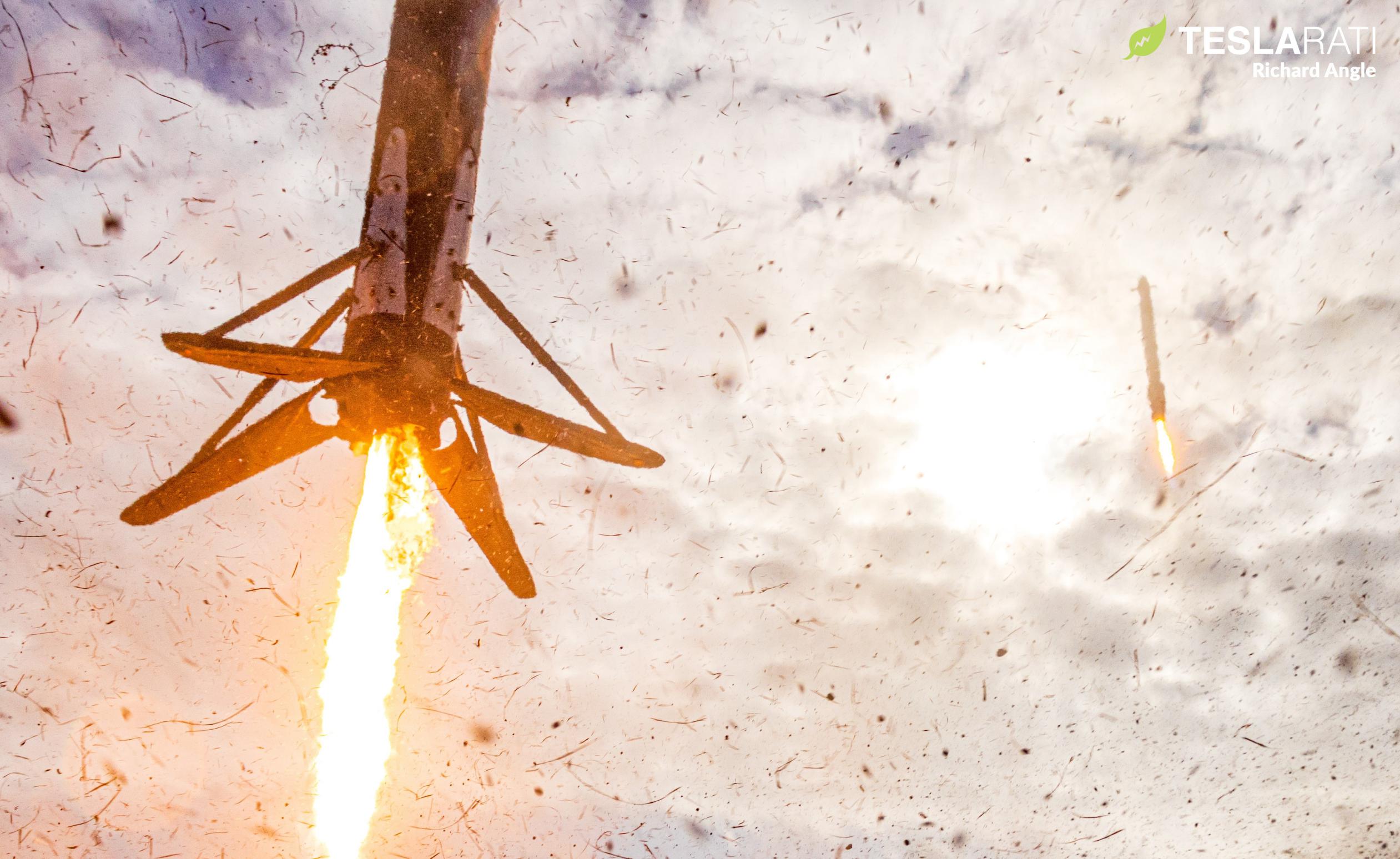
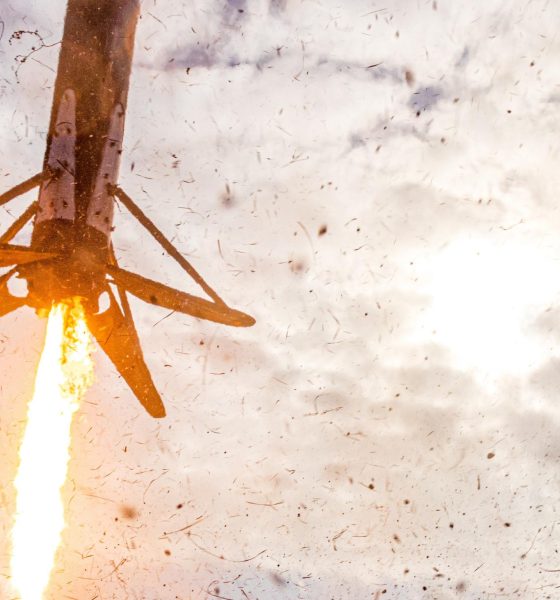
News
SpaceX’s Falcon Heavy rocket back in action after a three-year hiatus
Update: The US Space Systems Command says that SpaceX’s first direct launch to geosynchronous orbit was a “simply outstanding” success, safely deploying several satellites more than 36,000 kilometers (~22,400 mi) above the Earth’s surface.
The success of the US Space Force’s USSF-44 mission means that SpaceX’s Falcon Heavy rocket is now one of just a handful of operational rockets in the world that has demonstrated the ability to launch satellites directly to geosynchronous orbit. More importantly, it’s one of just three US rockets with that established capability. The other two rockets – ULA’s Atlas V and Delta IV – will cease to be available for US military missions by the end of 2023, meaning that Falcon Heavy may briefly become the only rocket in the world able to launch certain US military missions until ULA’s next-generation Vulcan rocket is ready to prove itself.
SpaceX’s Falcon Heavy has continued a streak of successful dual-booster landings during its first attempted launch directly to geosynchronous orbit, a mission that was also the rocket’s first launch in more than three years.
Known as USSF-44 and initially scheduled to launch more than two years ago, the US Space Force mission finally lifted off on November 1st, 2022 after relentless payload delays. By mid-2021, the hardware required for SpaceX’s first Falcon Heavy launch since June 2019 – mainly three new first-stage boosters – had finished qualification testing and been shipped to Florida in anticipation of a late-2021 or early-2022 launch. That launch never came.
Only in November 2022 did most or all of USSF-44’s payloads finally come together, resulting in a gap of more than 40 months between Falcon Heavy launches as practically every other payload assigned to the rocket in the interim experience their own significant delays. Regardless, on November 1st, Falcon Heavy lifted off for the fourth time and performed flawlessly for the nine minutes the US Space Force allowed SpaceX’s webcast to continue.
Over the course of those nine minutes, Falcon Heavy’s twin side boosters – both flying for the first time – helped send the rest of the rocket on its way to space before separating from the center core, upper stage, and payload to boost back towards the Florida coast. Less than eight minutes after liftoff, they safely touched down seconds apart at SpaceX’s LZ-1 and LZ-2 landing zones. Lacking grid fins or landing legs, Falcon Heavy’s intentionally-expendable center core (middle booster) continued burning for another 90 seconds and only separated from the upper stage after reaching a speed of almost four kilometers per second (8,900 mph) – a new record for a SpaceX rocket booster.
The center core, B1066, was likely obliterated when it reentered Earth’s atmosphere traveling at approximately 50% of orbital velocity. Side boosters B1064 and B1065, however, will be rapidly refurbished for a “future US Space Force mission” that SpaceX – perhaps incorrectly – says could follow USSF-44 as early as “later this year.” Unless SpaceX has received an additional USSF launch contract in secret, the company’s next USSF mission appears to be USSF-67, which the US Space Systems Command reported could launch as early as January 2023 in their latest press release [PDF]. USSF-44 and USSF-67 are technically set to launch in the same US fiscal year but not the same calendar year.
USSF-44 is SpaceX’s first direct geosynchronous launch, meaning that Falcon Heavy is attempting to deliver the US military’s payloads to a circular geosynchronous orbit (GEO) approximately 36,000 kilometers (~22,400 mi) above Earth’s surface. “Geosynchronous” refers to the fact that a spacecraft’s orbital velocity matches Earth’s rotational velocity at that altitude, making it a popular destination for communications and Earth observation satellites that want to observe the same region of Earth all the time. Ordinarily, to simplify the rocket’s job, most GEO-bound satellites are launched into an elliptical geosynchronous or geostationary transfer orbit (GTO) and use their own propulsion to circularize that ellipse.
On a direct-to-GEO launch, the rocket does almost all of the work. After reaching a parking orbit in Low Earth Orbit (LEO), Falcon Heavy’s upper stage likely completed a second burn to geosynchronous transfer orbit. Then, while conducting a complex ballet of thermal management and tank pressure maintenance to prevent all of its cryogenic liquid oxygen (LOx) from boiling into gas and its refined kerosene (RP-1) from freezing into an unusable slush, the upper stage must coast ‘uphill’ for around five or six hours.
Over that journey from an altitude of about 300 kilometers to 36,000 kilometers, in addition to the above tasks, the upper stage must also survive passes through both of Earth’s radiation belts. At apogee, Falcon S2 must reignite its Merlin Vacuum engine for around one or two minutes to reach a circular geosynchronous orbit. Payload deployment will follow and could last anywhere from a few minutes to an hour. Finally, to be a dutiful space tenant, Falcon’s upper stage must complete at least one or two more burns to reach its final destination: a graveyard orbit a few hundred kilometers above GEO.
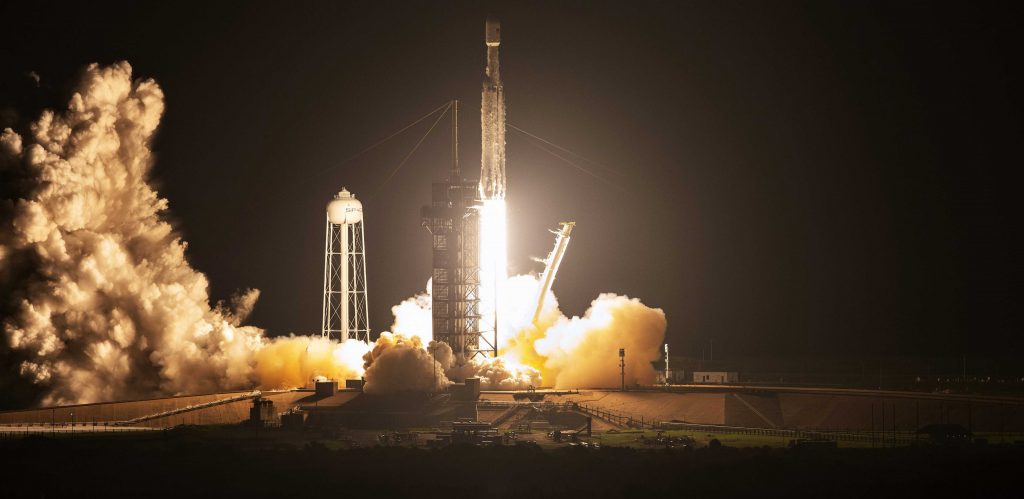
SpaceX’s third Falcon Heavy launch, a US Air Force mission called STP-2, was a partial dry-run of direct-to-GEO launch – albeit in low Earth orbit (LEO) instead of LEO, GTO, and GEO. During STP-2, Falcon Heavy’s upper stage completed four successful burns in three and a half hours. USSF-44 is significantly more challenging by most measures but not entirely outside of SpaceX’s range of experience. In addition to STP-2, Falcon 9 upper stages have conducted a few long-duration coast tests after completing unrelated primary missions.
In statements made to Spaceflight Now, the US Space Systems Command said that USSF-44’s two main payloads are a pair of propulsive kick stages and payload platforms, one – LDPE-2 – supplied by Northrop Grumman and the other – the “Shepherd Demonstration” – a mystery. LDPE-2 will reportedly carry three hosted payloads and deploy three rideshare satellites: likely two Lockheed Martin LINUSS-A cubesats and Millenium Space Systems’ TETRA-1. All three rideshare satellites are designed to demonstrate various new technologies, ranging from propulsion systems to avionics.
Rewatch SpaceX’s USSF-44 Falcon Heavy launch here.
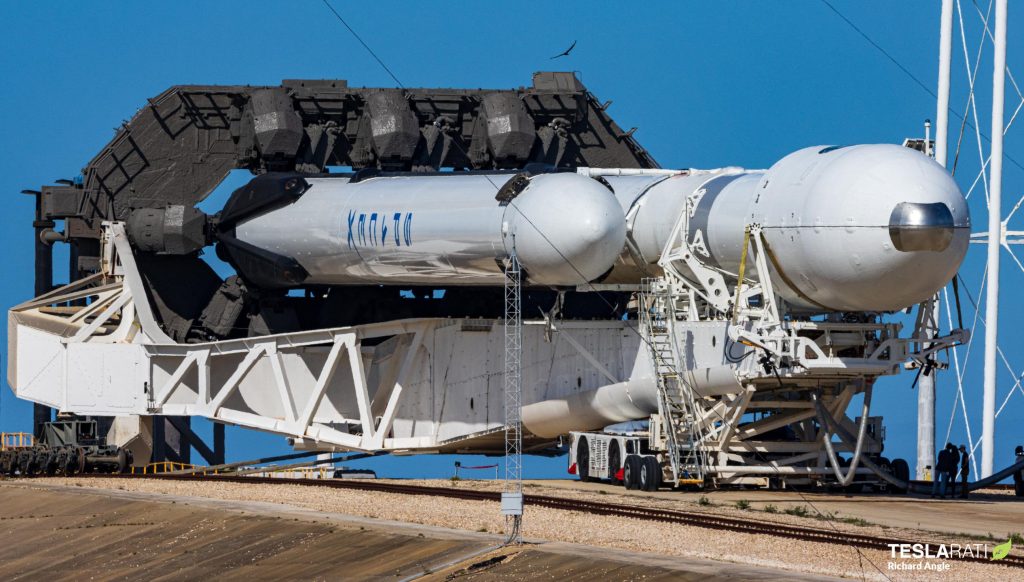
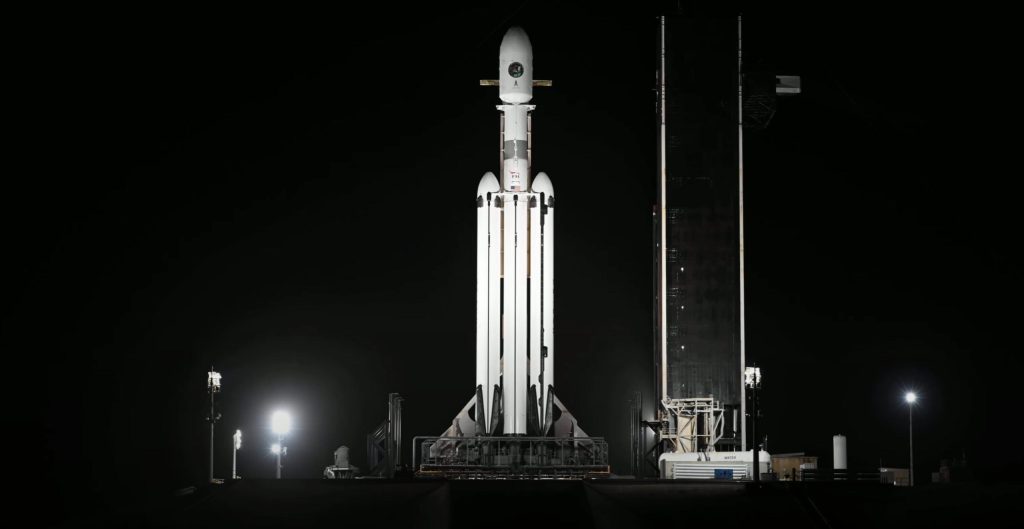
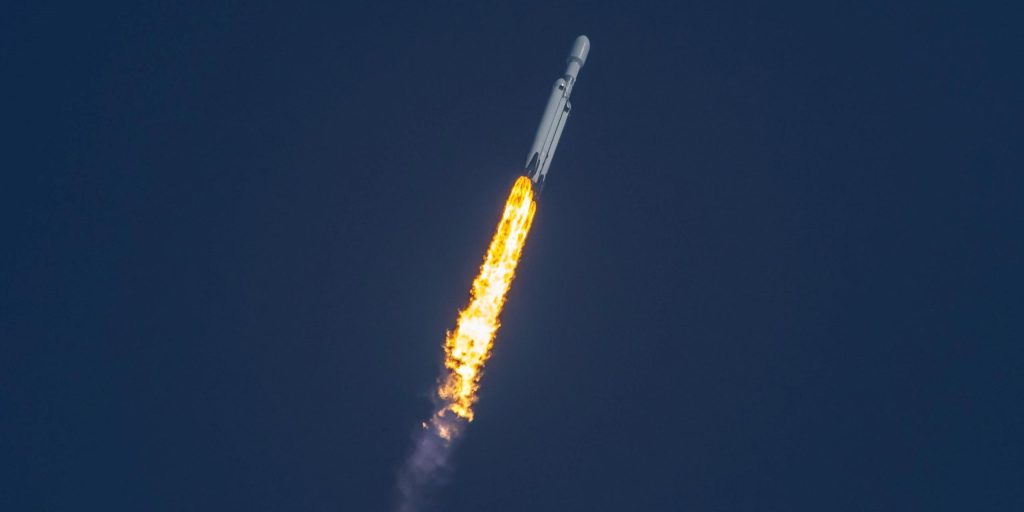


News
Tesla FSD fleet is nearing 7 billion total miles, including 2.5 billion city miles
As can be seen on Tesla’s official FSD webpage, vehicles equipped with the system have now navigated over 6.99 billion miles.

Tesla’s Full Self-Driving (Supervised) fleet is closing in on almost 7 billion total miles driven, as per data posted by the company on its official FSD webpage.
These figures hint at the massive scale of data fueling Tesla’s rapid FSD improvements, which have been quite notable as of late.
FSD mileage milestones
As can be seen on Tesla’s official FSD webpage, vehicles equipped with the system have now navigated over 6.99 billion miles. Tesla owner and avid FSD tester Whole Mars Catalog also shared a screenshot indicating that from the nearly 7 billion miles traveled by the FSD fleet, more than 2.5 billion miles were driven inside cities.
City miles are particularly valuable for complex urban scenarios like unprotected turns, pedestrian interactions, and traffic lights. This is also the difference-maker for FSD, as only complex solutions, such as Waymo’s self-driving taxis, operate similarly on inner-city streets. And even then, incidents such as the San Francisco blackouts have proven challenging for sensor-rich vehicles like Waymos.
Tesla’s data edge
Tesla has a number of advantages in the autonomous vehicle sector, one of which is the size of its fleet and the number of vehicles training FSD on real-world roads. Tesla’s nearly 7 billion FSD miles then allow the company to roll out updates that make its vehicles behave like they are being driven by experienced drivers, even if they are operating on their own.
So notable are Tesla’s improvements to FSD that NVIDIA Director of Robotics Jim Fan, after experiencing FSD v14, noted that the system is the first AI that passes what he described as a “Physical Turing Test.”
“Despite knowing exactly how robot learning works, I still find it magical watching the steering wheel turn by itself. First it feels surreal, next it becomes routine. Then, like the smartphone, taking it away actively hurts. This is how humanity gets rewired and glued to god-like technologies,” Fan wrote in a post on X.
News
Tesla starts showing how FSD will change lives in Europe
Local officials tested the system on narrow country roads and were impressed by FSD’s smooth, human-like driving, with some calling the service a game-changer for everyday life in areas that are far from urban centers.

Tesla has launched Europe’s first public shuttle service using Full Self-Driving (Supervised) in the rural Eifelkreis Bitburg-Prüm region of Germany, demonstrating how the technology can restore independence and mobility for people who struggle with limited transport options.
Local officials tested the system on narrow country roads and were impressed by FSD’s smooth, human-like driving, with some calling the service a game-changer for everyday life in areas that are far from urban centers.
Officials see real impact on rural residents
Arzfeld Mayor Johannes Kuhl and District Administrator Andreas Kruppert personally tested the Tesla shuttle service. This allowed them to see just how well FSD navigated winding lanes and rural roads confidently. Kruppert said, “Autonomous driving sounds like science fiction to many, but we simply see here that it works totally well in rural regions too.” Kuhl, for his part, also noted that FSD “feels like a very experienced driver.”
The pilot complements the area’s “Citizen Bus” program, which provides on-demand rides for elderly residents who can no longer drive themselves. Tesla Europe shared a video of a demonstration of the service, highlighting how FSD gives people their freedom back, even in places where public transport is not as prevalent.
What the Ministry for Economic Affairs and Transport says
Rhineland-Palatinate’s Minister Daniela Schmitt supported the project, praising the collaboration that made this “first of its kind in Europe” possible. As per the ministry, the rural rollout for the service shows FSD’s potential beyond major cities, and it delivers tangible benefits like grocery runs, doctor visits, and social connections for isolated residents.
“Reliable and flexible mobility is especially vital in rural areas. With the launch of a shuttle service using self-driving vehicles (FSD supervised) by Tesla in the Eifelkreis Bitburg-Prüm, an innovative pilot project is now getting underway that complements local community bus services. It is the first project of its kind in Europe.
“The result is a real gain for rural mobility: greater accessibility, more flexibility and tangible benefits for everyday life. A strong signal for innovation, cooperation and future-oriented mobility beyond urban centers,” the ministry wrote in a LinkedIn post.
News
Tesla China quietly posts Robotaxi-related job listing
Tesla China is currently seeking a Low Voltage Electrical Engineer to work on circuit board design for the company’s autonomous vehicles.

Tesla has posted a new job listing in Shanghai explicitly tied to its Robotaxi program, fueling speculation that the company is preparing to launch its dedicated autonomous ride-hailing service in China.
As noted in the listing, Tesla China is currently seeking a Low Voltage Electrical Engineer to work on circuit board design for the company’s autonomous vehicles.
Robotaxi-specific role
The listing, which was shared on social media platform X by industry watcher @tslaming, suggested that Tesla China is looking to fill the role urgently. The job listing itself specifically mentions that the person hired for the role will be working on the Low Voltage Hardware team, which would design the circuit boards that would serve as the nervous system of the Robotaxi.
Key tasks for the role, as indicated in the job listing, include collaboration with PCB layout, firmware, mechanical, program management, and validation teams, among other responsibilities. The role is based in Shanghai.
China Robotaxi launch
China represents a massive potential market for robotaxis, with its dense urban centers and supportive policies in select cities. Tesla has limited permission to roll out FSD in the country, though despite this, its vehicles have been hailed as among the best in the market when it comes to autonomous features. So far, at least, it appears that China supports Tesla’s FSD and Robotaxi rollout.
This was hinted at in November, when Tesla brought the Cybercab to the 8th China International Import Expo (CIIE) in Shanghai, marking the first time that the autonomous two-seater was brought to the Asia-Pacific region. The vehicle, despite not having a release date in China, received a significant amount of interest among the event’s attendees.








